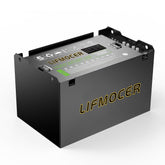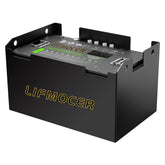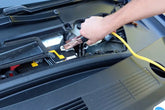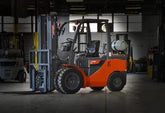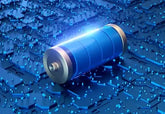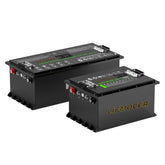The Essential Guide to Lithium Battery Disposal
Lithium Battery Types
Lithium batteries come in a variety of forms, each designed for specific applications. Small consumer Li-ion batteries, commonly used in devices such as smartphones, tablets, and laptops, provide compact, lightweight power. Tool batteries, found in cordless drills, saws, and other power tools, are typically larger and built to deliver higher current for demanding tasks. On a much larger scale, electric vehicle (EV) and energy storage batteries supply substantial energy for cars, e-bikes, and home or industrial energy systems.
To help identify different lithium batteries, experts at Home Depot recommend checking for labels like “Li-ion” or “LiPo”, which indicate the battery chemistry. The physical shape and size can also provide clues: small rectangular or cylindrical packs usually belong to consumer electronics, while larger block-shaped or modular packs are often used in tools or vehicles. According to guidance from the EPA, paying attention to the device type the battery came from can help ensure safe handling and proper recycling. By following these lithium battery guide, users can make sure that batteries are directed to the appropriate lithium battery disposal and recycling channels, reducing environmental risk and fire hazards.

Common Disposal Lithium Batteries Channels
Retail and Electronics‑Store Drop‑Offs
Many major retailers and electronics stores accept used lithium ion batteries — or devices containing them — for recycling. Stores such as Home Depot, Best Buy, Lowe's, Staples, Batteries Plus (depending on location), and others often participate in take‑back or drop‑off programs for rechargeable batteries and small electronics. This makes it convenient for consumers to recycle everyday Li‑ion batteries from phones, laptops, power tools, and similar devices instead of discarding them.
Household Hazardous Waste (HHW) Collection & Municipal Drop‑Off Centers
Local governments often provide Household Hazardous Waste (HHW) collection programs or dedicated recycling centers where residents can bring used batteries. These programs accept lithium‑ion batteries — whether loose or still inside devices — and often include one‑day or periodic collection events. This channel helps prevent hazardous batteries from ending up in regular trash or curbside recycling bins.
Mail‑in Recycling Programs and Battery Take‑Back Initiatives
For rechargeable batteries or devices — especially smaller or unusual types (e.g. button cells, rechargeable tool batteries) — mail‑in programs or manufacturer/brand take‑back services are available. Organizations like Call2Recycle offer free mail‑in or designated drop‑off options. In some regions, other specialized recyclers or mail‑back boxes (such as “The Big Green Box”) may also accept batteries. This is a useful option if nearby drop‑off locations are unavailable.
Specialized Recycling Facilities for Large or Industrial‑Scale Batteries
For medium to large lithium‑ion battery systems — such as those used in electric vehicles (EVs), e‑bikes, home energy storage, industrial equipment, or large power tools — typical retail or HHW programs may not accept them. In those cases, the EPA recommends contacting the original manufacturer, dealer, or the company that installed the battery system to arrange proper disposal or recycling. These specialized recyclers have the necessary equipment and compliance procedures to safely handle high‑capacity batteries.
Online Recycling Locators and Databases
If you're unsure where to take a used battery, using an online recycling locator can help. Tools such as the search database on Earth911 or the site of Call2Recycle allow users to enter their ZIP code and find nearby authorized battery collection points — whether retail stores, HHW centers, or specialized recyclers. This can be especially helpful if local drop‑off locations are limited.
Why Proper Disposal Matters
Improper disposal of lithium batteries can lead to serious safety hazards. Crushing, puncturing, or short-circuiting a battery — or simply throwing it in with household trash — can trigger a thermal runaway reaction, causing the battery to catch fire or even explode. There have been numerous real-world incidents where improperly discarded batteries sparked fires in landfills, trash trucks, and even home recycling bins, resulting in property damage and injury.
Beyond the immediate fire risk, careless disposal also poses environmental and resource concerns. Lithium batteries contain heavy metals and valuable elements such as lithium, cobalt, and nickel. If these batteries end up in landfills, toxic substances can leach into soil and water, while the opportunity to recover and reuse these materials is lost. Proper battery disposal guidelines ensures that these resources can be safely recycled and reintroduced into the supply chain, reducing environmental impact and supporting sustainable resource management.

Pre‑disposal Safety Steps
Before disposing of lithium batteries, taking some simple safety precautions can prevent accidents and make recycling safer for everyone. Lithium-ion batteries store a significant amount of energy, which can pose fire or short-circuit risks if mishandled. According to the U.S. Environmental Protection Agency's guide on Used Lithium-Ion Batteries, properly preparing batteries before disposal is an essential step.
First, power down and disconnect devices. If the battery is removable, follow the manufacturer's instructions to safely take it out. This ensures the battery is isolated from the device circuitry, reducing the chance of accidental activation or short-circuit during handling.
Next, protect the terminals. Cover the positive and negative contacts with non-conductive tape, or place the battery in its own plastic bag. This simple measure helps prevent sparks or short-circuits while transporting the battery to a recycling center.
Finally, avoid damaging, crushing, or puncturing the battery. Even used batteries contain enough energy to cause a fire if mishandled, so always handle them gently and never attempt to open or dismantle sealed packs.
Large or Specialized Batteries (EV, e-bike, Energy Storage)
Large lithium batteries, such as those used in electric vehicles, e-bikes, or home energy storage systems, are considered industrial or hazardous waste and should never be disposed of through regular recycling or household collection programs. Due to their size, energy content, and complexity, mishandling these batteries can create serious safety risks, including fire or chemical exposure.
Proper disposal typically requires contacting the battery's manufacturer, authorized dealer, or a certified recycling company. These organizations have the expertise and equipment to safely handle, transport, and process high-capacity batteries. The U.S. Department of Energy (DOE) and the Environmental Protection Agency (EPA) both emphasize that specialized batteries must be managed according to strict safety and environmental standards, which may include permits or regulatory compliance for transport and recycling. (DOE: EV Battery Recycling, EPA: Used Lithium-Ion Batteries)
Transport and Legal Compliance
Transporting lithium ion batteries is tightly regulated because they are classified as hazardous materials. Under U.S. DOT and PHMSA rules, lithium batteries must meet specific requirements before being shipped. These include proper packaging that can withstand pressure and impact, UN-approved containers for damaged or defective batteries, and clear hazard labeling such as “Lithium Ion Batteries — UN3480” or “Lithium Batteries Contained in Equipment — UN3481.” Shippers must also follow state-of-charge limits (often 30% for air transport) and ensure that terminals are protected from short-circuit. For commercial shipments, PHMSA requires formal training for anyone handling or preparing lithium batteries for transport.
Legal compliance goes beyond transportation rules. Under the EPA's Resource Conservation and Recovery Act (RCRA), lithium batteries may be considered hazardous waste depending on their chemistry and condition. Generators—including homeowners, businesses, and service centers—must ensure that used batteries are stored safely, not accumulated for excessive periods, and sent only to certified recycling or treatment facilities. Businesses producing larger quantities may also need manifests, proper labeling (“Universal Waste—Battery”), and documentation that tracks where the waste is sent.
Because transport and waste rules can vary by state, consumers and businesses should always check local regulations before moving or recycling lithium batteries. Following these rules not only prevents accidents but also ensures legal compliance and protects public health and the environment.

Handling Damaged or Swollen Batteries
Damaged or swollen lithium batteries require extra caution because their internal structure may already be compromised. When a battery shows signs of swelling, leaking, or unusual heat, it means the protective layers inside may no longer be stable, increasing the chance of sudden failure if handled incorrectly. This is why emergency handling focuses on isolating the battery and preventing additional stress.
The first priority is to keep the damaged battery away from flammable materials and from anything that could trigger further deterioration. This includes avoiding pressure, impact, or twisting. If possible, place the battery in a non-metallic, fire-resistant container—such as a bucket filled with dry sand—where it can be held safely until it's handed over to professionals. Extreme DIY methods sometimes circulate online, but they should be treated with caution and only considered when professional support is truly unavailable.
When a damaged battery appears unstable, the safest option is to contact qualified recycling services or your local fire department for instructions. Many municipal agencies have protocols for handling compromised lithium cells and can guide you through the safest next steps. Avoid improvising, avoid water exposure unless explicitly instructed by authorities, and treat any unusual hissing, bulging, or odor as a sign that expert assistance is necessary.
Recycling Process Overview
Recycling lithium batteries follows a structured and highly engineered process designed to recover valuable materials while minimizing environmental impact. After collection, batteries are first sorted by chemistry and condition, ensuring that incompatible types don't enter the same processing stream. This initial step is crucial because different chemistries require different treatment methods to safely break them down and recover usable metals.
Once sorted, the batteries move into mechanical or chemical processing. Mechanical processes typically involve controlled disassembly, shredding, and separation of components such as casings, current collectors, and electrode materials. Chemical methods—such as hydrometallurgy or pyrometallurgy—are then used to extract key elements including lithium, nickel, and cobalt. These metals are refined and returned to the manufacturing supply chain, while any non-recoverable materials are disposed of safely to prevent environmental contamination.
This recycling loop provides both environmental and economic benefits. Recovering metals reduces dependence on mining, lowers carbon emissions associated with raw material extraction, and supports a more sustainable battery industry. At the same time, it helps manufacturers reduce costs by reusing high-value materials that would otherwise require significant resources to source anew. Effective recycling ultimately closes the loop—turning end-of-life batteries into inputs for the next generation of energy-storage products.

Frequently Asked Questions
Lithium-battery disposal rules can be confusing, so this section answers some of the most common questions consumers face. The guidance here is based on practical recommendations from the U.S. EPA and recycling programs such as Call2Recycle, presented in a clear, reader-friendly way.
Can I throw old phone batteries in the trash?
No — lithium batteries should never go into household trash. When tossed into regular waste, they can be crushed or exposed to pressure and heat, which may lead to ignition. The safer option is to bring them to a certified battery drop-off point, such as an electronics retail store, a municipal hazardous-waste collection center, or an authorized mail-back recycling program.
How do I identify a dangerous battery?
Danger signs usually appear physically or through unusual behavior. Swelling or a warped casing often indicates internal cell failure. Leakage, a sweet-chemical odor, or signs of overheating — such as unexpected warmth, hissing, or smoke — all suggest that the battery is unsafe to handle. If you spot any of these symptoms, isolate the battery in a nonflammable area and avoid using it.
How are you supposed to throw away lithium batteries?
The proper method is to take them to an approved lithium-battery recycling facility. Before transport, cover the terminals with non-conductive tape and place the battery in an individual bag or container to avoid short-circuiting. This ensures safe handling from your home to the recycling center and prevents hazards during transportation.
Can I recycle a lithium battery at Home Depot?
Many Home Depot locations accept small consumer rechargeable batteries through their in-store recycling kiosks. Availability can vary by region, so it's best to check with your local store or verify through a battery-recycling locator service. Large-format or industrial batteries typically require specialized recycling services and are not accepted at retail locations.

Call to Action
As lithium batteries become part of nearly every device we use—from small consumer electronics to large energy-storage systems—responsible disposal is no longer optional; it's an essential step in protecting both public safety and the environment. Understanding battery types, recognizing risks, following safe handling practices, and using certified recycling channels all help ensure that these high-energy cells are managed the right way. When each stage is handled properly, valuable materials can be recovered, fires can be prevented, and the overall environmental impact is significantly reduced.




